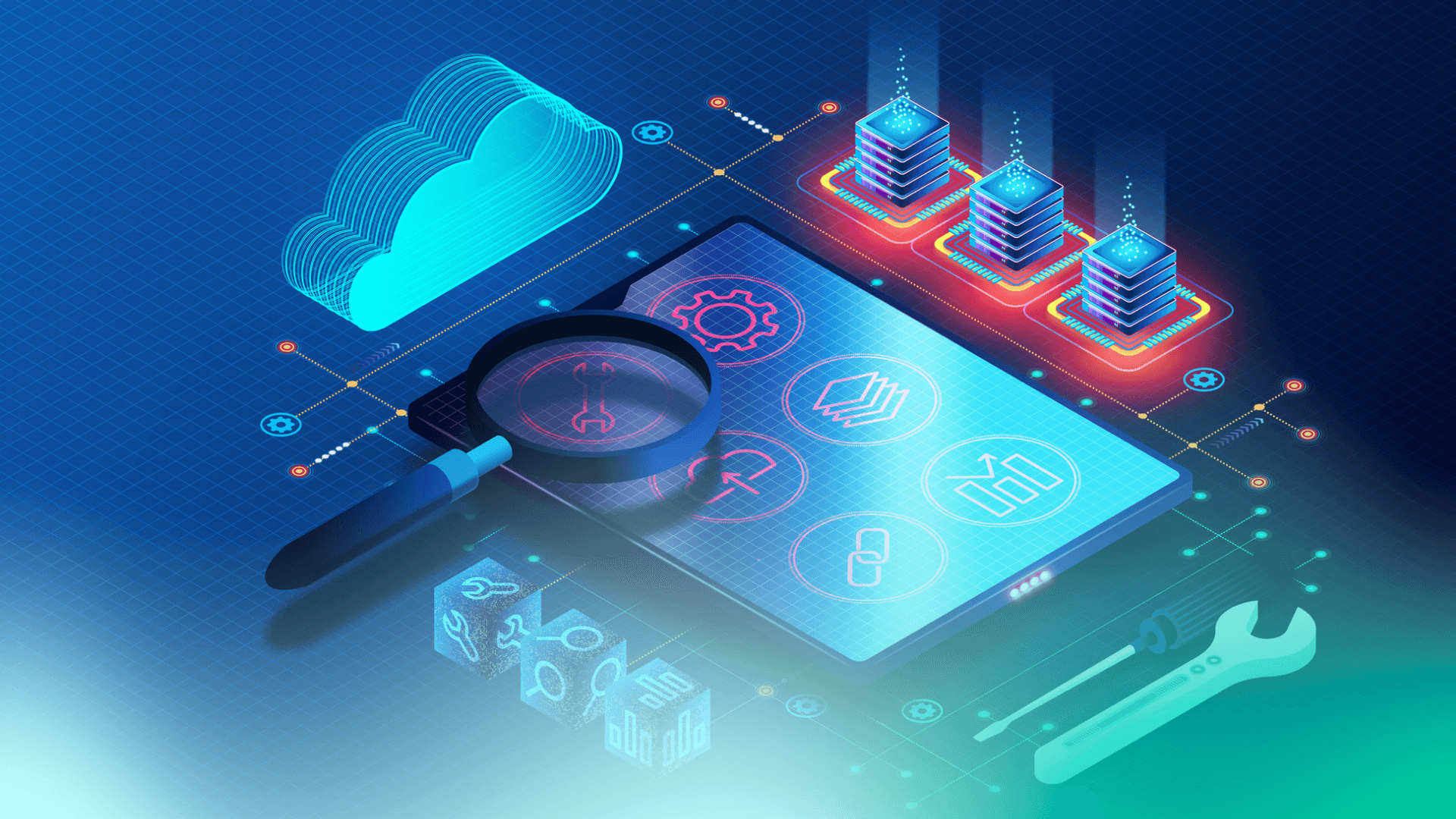Key Takeaways
- Definition: Application modernization upgrades legacy software to align with current business needs, security standards, and user expectations.
- Core Benefits: Reduces maintenance costs (often 60-80% of IT budgets), eliminates security vulnerabilities, and enables scalability.
- Main Strategies: The “7 R’s” guide the process, with Rehosting (Lift-and-Shift), Replatforming, and Refactoring being the most common approaches.
- Challenges: Success requires overcoming resistance to change, managing upfront costs, and bridging technical skill gaps.
Defining Application Modernization
Application modernization refers to the process of upgrading and enhancing legacy software systems so that they align with current business needs, technological standards, and user expectations. Modernization tackles the problem of older “mission-critical” applications that still power many enterprises – applications built 5, 10, or even 20+ years ago using outdated frameworks, hardware, or design principles. These legacy applications may work in production today, but they impose increasing costs and risks, such as difficulty integrating with new digital services, poor scalability, and heightened security vulnerabilities.
In simpler terms, application modernization transforms older systems so they can thrive in the present (and future) without requiring a complete “rip-and-replace.”
This might mean:
- Migrating from an on-premises data center to a cloud environment.
- Rearchitecting a monolithic codebase into microservices.
- Updating the user interface (UI) to be more responsive.
- Refactoring code so that it follows contemporary best practices.
Why Does “Legacy” Even Matter?
Many companies rely on legacy systems because they are stable, their core functionality is irreplaceable, or they contain unique business rules and domain logic accumulated over years. Yet these same systems:
- Lack Flexibility. Adapting legacy code for new platforms, features, or integrations can be time-consuming and fraught with risk.
- Suffer from High Maintenance Costs. According to some industry studies (e.g., Dell reports), enterprises can spend 60-80% of their IT budgets simply “keeping the lights on” for older software. That leaves little budget for improving or innovating, revealing the hidden costs of legacy code. That leaves little budget for improving or innovating.
- Have Security Weaknesses. Legacy frameworks often miss modern patching mechanisms, leaving known vulnerabilities exposed.
- Slow Down Digital Transformation. When a company needs to add real-time analytics, mobile accessibility, or cloud-native features, legacy apps can hold progress back.
By modernizing these applications, a company ensures the longevity of its foundational business processes while reducing overall risk and cost. This also opens the door to new digital capabilities, such as improved customer experiences, advanced data analytics, or more seamless integrations with external APIs.
Why Enterprises Need to Modernize
While “updating old systems” might sound optional, in reality, modernizing is essential for any company wanting to stay competitive, secure, and cost-efficient. Here are the major reasons:
1. Challenges of Legacy Systems
- Ballooning Maintenance Costs: Many legacy applications run on expensive hardware or rely on outdated software dependencies that few developers still understand. Because of this, making even minor changes can require extensive manual intervention, specialized skill sets, and slow development cycles. Over time, these costs can balloon and erode the organization’s budget for other, more strategic initiatives.
- Security Vulnerabilities: Older frameworks or operating systems often no longer receive regular security patches, leaving well-known exploits wide open to cyberattacks. Since many legacy applications handle critical business data – customer records, financial transactions, or intellectual property – failing to initiate a modernization journey for security measures can have severe legal and financial consequences. A single breach can cause massive reputational damage.
- Scalability and Performance Issues: Today’s markets demand highly responsive and reliable digital experiences. Legacy apps can struggle under surging traffic, especially if they were designed in an era of predictable, modest workloads. As the customer base grows or spikes in usage become common, older architectures may buckle, leading to service outages or slow performance that can frustrate both customers and internal users.
- Integration Complexities: Modern businesses rely on an ecosystem of applications – CRMs, e-commerce platforms, mobile apps, IoT devices, data pipelines, etc. Legacy applications were often never designed to interface with these new ecosystems. They might use proprietary protocols, monolithic structures, or tightly coupled components that can’t easily “talk” to modern cloud services or microservice-based platforms.
2. IT Budget Pressures
Many organizations see the majority of their IT budgets consumed by the maintenance of legacy systems, leaving little room for growth, experimentation, or value-added services. The benefits of application modernization include cutting maintenance costs and allowing savings to be redirected towards new initiatives, such as more automation, launching a new mobile application, or enhancing DevOps practices.
3. Competitive Advantage and Agility
Being able to develop, test, and deploy new features quickly can be a decisive differentiator for businesses. Modernized systems often:
- Integrate smoothly with CI/CD pipelines so new code can be tested and deployed in hours or days instead of weeks or months.
- Support microservices, enabling incremental improvements in one area of the existing application without risking the entire system.
- Remain flexible, making it easier to adapt to new market trends or user demands (e.g., launching an omnichannel service that includes web, mobile, and voice-activated interactions).
In contrast, staying locked into a legacy stack can mean losing ground to competitors who iterate faster. Modernization thus becomes a strategic enabler for business growth and innovation.
Common Application Modernization Strategies
When enterprises begin modernizing their legacy applications, the first step is deciding how to approach each application or system. Experts often refer to a spectrum of approaches, sometimes summarized in “the 7 R’s of modernization.” The three most common forms – rehosting, replatforming, and refactoring – are frequently singled out for deeper attention.
The 7 R’s of Modernization
- Retain: Keep the app as-is if updating it doesn’t pay off immediately.
- Retire: Decommission if the application is obsolete or redundant.
- Rehost (Lift-and-Shift): Move the application onto new infrastructure with minimal changes.
- Replatform: Update the app’s underlying platform (e.g., cloud migration) with modest code modifications.
- Refactor (Rearchitect): Make fundamental changes to the app’s code and architecture, such as breaking a monolith into microservices.
- Repurchase (Replace): Replace the old system with an off-the-shelf solution or cloud native SaaS product if it’s cheaper and meets needs better.
- Rebuild: Rewrite the application from scratch if the code is too outdated to salvage.
No single approach is “best” for all applications; each part of your portfolio may warrant a different modernization strategy, depending on how critical it is, what technologies it uses, and how expensive or risky it is to change.
1. Rehosting (Lift-and-Shift)
What It Is
Rehosting is the process of moving an application from one environment to another – often from on-premises hardware to a public cloud – without changing the code itself. It’s sometimes called “lift-and-shift” because you lift the application from the old host and shift it to the new one.
Pros
- Fastest route to getting off aging hardware to a cloud-native solution.
- May reduce some immediate operational costs (e.g., data center overhead).
- Minimal development effort is needed.
Cons
- Doesn’t inherently improve code maintainability.
- Won’t fix deeper design issues, such as monolithic structures or poor test coverage.
- May not exploit all the benefits of a modern cloud environment (like elasticity or microservices).
Rehosting is commonly chosen when speed is paramount – such as a data center shutdown deadline – or if the organization needs a quick first step. Over time, you may use rehosting as a stepping stone to more thorough transformations.
2. Replatforming
What It Is
Replatforming involves moving an application to a new runtime platform, framework, or environment with relatively minor code tweaks. This might mean containerizing a Java EE app with Docker and running it on Kubernetes or migrating the database from an on-premises Oracle setup to a cloud-native service. You change enough to leverage modern infrastructure but do not fully rewrite or rearchitect the application.
Pros
- Gains some benefits of cloud or modern runtime environments (scalability, managed services).
- Less disruptive than a full refactoring.
- Generally faster than rewriting, yet yields a more efficient deployment model than rehosting alone.
Cons
- Still retains much of the old code’s structure and potential technical debt.
- May require updates to configurations, dependencies, or scripts.
- Team must handle the learning curve of new platforms.
Replatforming is a popular application modernization strategy when organizations want to take advantage of container orchestration, automated scaling, or managed databases without rewriting large swaths of code. It can also pave the way for subsequent incremental refactoring.
3. Refactoring (Rearchitecting)
What It Is
Refactoring – or “rearchitecting” – is a more invasive approach. It involves making notable changes to the code structure, possibly adopting microservices or new frameworks, or even rewriting significant portions of the business logic. Refactoring aims to fix deep design problems that degrade performance and maintainability or don’t allow integration with modern services, and modern refactoring tools can help ensure these changes don’t introduce regressions.
Pros
- Delivers major improvements in scalability, code quality, and maintainability.
- Aligns closely with modern best practices, such as domain-driven design or microservice-based architecture.
- Can significantly reduce technical debt and open new capabilities (APIs, real-time analytics, CI/CD pipelines, etc.).
Cons
- More time-consuming and expensive than rehosting or replatforming.
- Higher risk if the system is critical and the refactoring is done too quickly or without proper testing.
- Requires a thorough understanding of the existing codebase and skilled developers.
Refactoring is typically chosen for core applications that are central to business strategy—those that must remain competitive, flexible, and high-performing for years to come. It offers the highest ROI but also requires more careful planning and execution, often requiring automated unit tests to ensure safe refactoring. It offers the highest ROI but also requires more careful planning and execution.
Challenges & Solutions in Application Modernization
While modernization offers clear benefits, it’s hardly a trivial undertaking. Enterprises can face multiple challenges, from cultural pushback to intricate technical barriers. Understanding these challenges – and how to mitigate them – can make or break a project’s success.
1. Resistance to Change
Long-time users or IT staff may be hesitant about updating an application that “still works.” Their concerns often revolve around training (learning new systems) or fear of downtime.
Overcoming the resistance requires
- Clear Communication: Emphasize how modernization makes their jobs easier (fewer outages, more automation), not just a “technical refresh.”
- Executive Sponsorship: Senior leaders should champion the initiative, showing how it aligns with broader business goals.
- Phased Rollouts: Use pilot projects or incremental improvements so users see immediate benefits without massive disruptions.
2. High Upfront Costs
Modernizing can demand spending on new hardware (or cloud services), licensing fees for new software, developer training, and bridging old and new systems in parallel for a while. Organizations often balk at large initial investments. Some solutions include:
- Phased or Incremental Modernization: Start with a smaller or less critical application. Demonstrate success and ROI, which can justify bigger investments.
- Cloud Cost-Optimization: Many cloud vendors have pricing models or credits that reduce costs during migrations.
- Strong ROI Business Cases: Show that app modernization lowers maintenance costs, prevents expensive security incidents, and fosters new revenue opportunities.
3. Integration Complexity
Legacy apps may have grown organically over decades, hooking into multiple services, batch jobs, or external APIs. Removing these dependencies to move or refactor the application can be difficult. Approaches that help include:
- Strangler Fig Pattern: Gradually replace portions of a monolith with modern components, routing traffic accordingly until the old system is fully replaced.
- API Wrapping: Encapsulate legacy functionality behind a stable API layer, letting you modernize internal code without breaking external integrations.
- Detailed Assessments: Map out all dependencies and connections before starting. This helps you plan and test thoroughly during migration stages.
4. Skill Gaps and Cultural Shifts
Some teams may have deep expertise in older technologies but limited familiarity with the cloud, DevOps, or agile development. In order to bridge the experience gap, teams should think about:
- Ongoing Training: Offer classes or certifications in newer frameworks (e.g., Spring Boot, container orchestration, automated testing).
- Pair Programming or Mentorship: Have experts in modern approaches work closely with legacy specialists to transfer knowledge in real time.
- External Consultants: For critical transformations, specialized consulting firms or modernization vendors can accelerate the learning curve.
5. Potential Downtime and Risk
Large, complex app modernization efforts can carry high stakes if the business depends on 24/7 availability. Minimizing risk means:
- Establishing a Robust Testing Strategy: Automated tests, especially unit and integration tests, verify that new code does not break existing workloads.
- Parallel Run or Blue-Green Deployment: Run the old and new systems side by side for a transition period to compare outputs and catch problems.
- Rollback Plans: If a new deployment causes issues, ensure a quick path to revert to the old version.
Conclusion
Application modernization is far more than a simple software upgrade. It is a strategic initiative that influences the entire enterprise—from budget allocation to user experience and innovation capacity. By understanding what modernization entails, why it’s essential, and the myriad approaches available, organizations can chart a tailored path that delivers real value.
Key takeaways:
- Application Modernization transforms outdated systems so they can thrive in today’s digital economy, leveraging modern infrastructures and development practices.
- Enterprises Need to Modernize to control costs, mitigate security risks, and stay agile in the face of competitive pressures.
- Common Strategies like rehosting, replatforming, and refactoring offer options for different business priorities and risk tolerances.
- Challenges such as organizational resistance, skill gaps, and integration complexities can be overcome with incremental approaches, robust testing, and clear communication.
- Java Modernization is a prominent subset of this effort, often revealing monolithic codebases that are difficult to scale or maintain without a disciplined approach to testing and refactoring.
Ultimately, modernizing your applications is a journey, not a destination. After an initial wave of upgrades – be it a simple rehost to the cloud or a thorough rearchitecting effort – continuous improvement should remain a priority. Evolving demands, new customer behaviors, and ongoing security threats mean that modernization must become part of the company’s culture. Only by embracing incremental, constant evolution can enterprises keep their critical systems fit for the future rather than slowly sliding back into legacy challenges.
In our second article, we move from this broad overview to focus on the concept of legacy code: what makes code “legacy,” why technical debt accumulates, and how to diagnose when your system is crying out for a modernization initiative – especially in the context of large Java applications.







